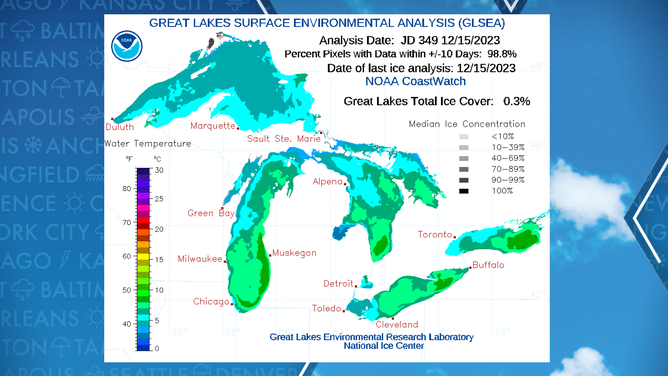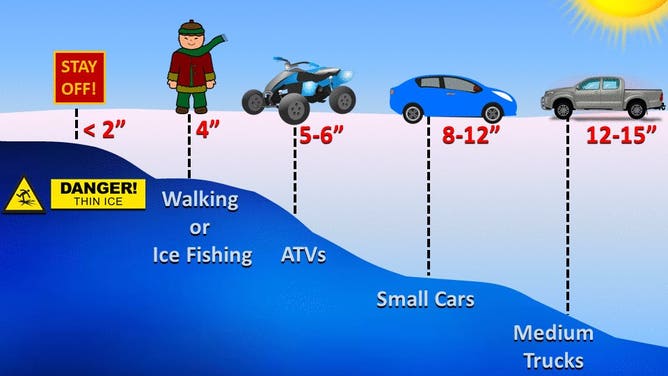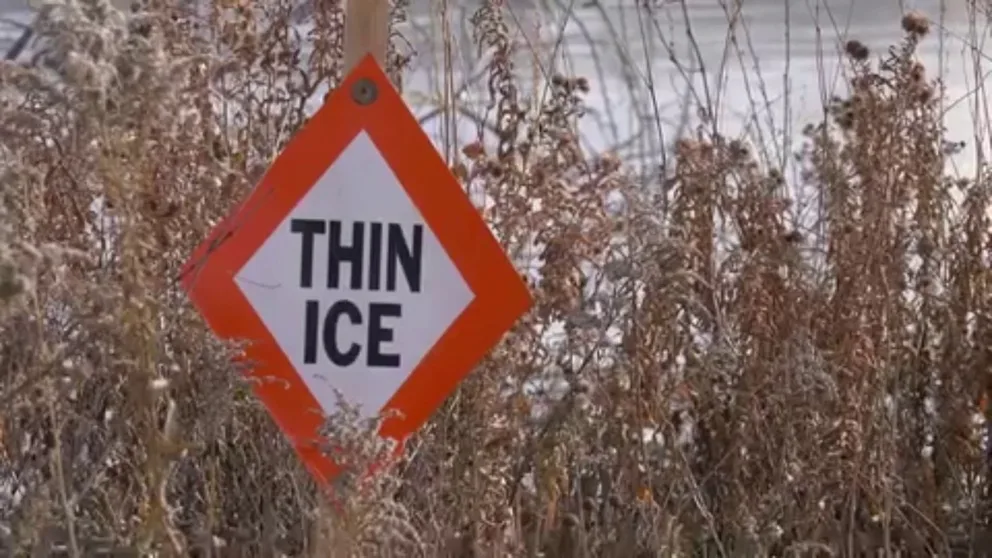Thin ice: Lakes bear impacts from warm winter
Ice-covered lakes are used for recreation during the winter. No matter whether large or small, many waterways are experiencing ice coverage that is below normal. The Great Lakes usually have around 3% ice coverage in mid-December, but data from NOAA indicates coverage is just above 0% this year.
Minnesota warns of thin ice on lakes
An extremely warm start to winter across the northern tier of the country means ice is thinner than normal
A warm start to the winter across the northern tier of the country has agencies warning of the dangers of thin ice as fishermen and sports enthusiasts wait until temperatures are cold enough to build a thick layer of ice.
Lakes in the Upper Midwest tend to start growing ice in November, with enough accretion to support the weight of humans by December.
A warm end to meteorological fall and start to the winter season has meant temperatures are well above average, which has kept ice growth minimal from the Great Lakes, through the Plains and into Canada.
"Think twice before you stop on thin ice," the city of Selkirk recently posted on Facebook.
The Canadian community is located about 90 minutes north of Minnesota and said its warm weather could cause patches of ice to quickly become dangerous.
EL NINO APPEARS TO BE ON VERGE OF RAPID COLLAPSE
Similar warnings have been broadcast in nearby states as the heat’s grip has left few unaffected.
"Ice conditions are pretty variable. So, there is a little bit of ice fishing going on already, but then again, there’s some open water patches. So, people need to be cognizant of the, you know, changing ice conditions as they move along and different places on the lake," said Todd Caspers, a fisheries biologist with the North Dakota Game and Fish Department.
Even the Great Lakes are seeing the effects from a warm start to winter, with the bodies of water seeing less ice coverage than is typical.

Ice analysis of the Great Lakes
(NOAA)
The five lakes usually have around 3% ice coverage in mid-December, but data from NOAA indicates the current year’s tally is just above 0%.
Experts advise you to never venture out on the ice of unknown thickness.
At least four inches of ice is needed to support a human’s weight sufficiently, and at least eight inches is recommended before attempting to drive a small-sized vehicle on it.

If ice is below 4" in depth it is advised you stay off.
(National Weather Service / FOX Weather)
7 WAYS TO STAY SAFE ON ICE, AND WHAT TO DO IF YOU FALL THROUGH
There have already been instances around the country of people falling through thin ice.
In Minnesota, two men and a dog were rescued after they fell into a lake during an ice-fishing excursion.
Police said a witness in Nowthen was able to push a canoe out to the group, but even with the aid, the men showed signs of hypothermia and were transported to a local medical center.
Authorities in Waukee, Iowa, were not as fortunate and said they uncovered the body of a child after responding to a welfare check along a lake.
"It’s absolutely vital that parents and guardians talk with their children about staying away from the ice – whether it’s on lakes or rivers, neighborhood ponds or retention ponds – unless there’s an adult there supervising," the Minnesota Department of Natural Resources warned.
The FOX Forecast Center said temperatures through the end of the year will likely remain above average in areas that are popular for ice fishing.
Ice coverage tends to peak between mid-February and March as temperatures start to rebound into the spring.

(FOX Weather)
